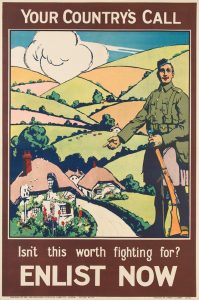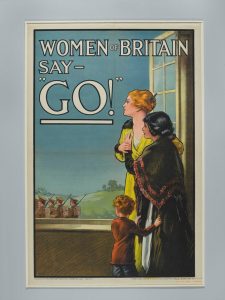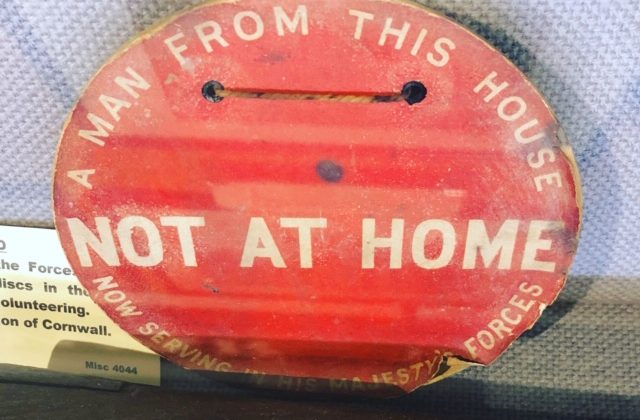Propaganda in the First World War
At the outbreak of the First World War, a great patriotic fervour ensured that the recruiting offices across Britain were kept busy with masses of young men keen to sign up for the duration of the war.
It is difficult to pinpoint exactly what the causes of this huge wave of patriotism were, though many different sources have been cited by historians and commentators. Whatever the cause, over three-quarters of a million men signed up through August and September 1914.

This patriotic vigour and ardent nationalism had a darker side to it though, as the war progressed through the end of 1914 and into 1915 xenophobia had started to grow rapidly across the country.
Attacks against Germans living in Britain (or indeed anyone with a German sounding name) and their property began to grow in number. As time went on, they grew in scope to include attacks against Jews, Russians, Swiss and Chinese groups and individuals, becoming more anti-foreigner than anti-German.
A Recruitment Slump
Simultaneously recruiting slowed and the number of volunteers from October through into the New Year were far lower than the previous months. This is not unusual in and of itself and to be expected as the reservoir of the most keen and patriotic individuals empties. This left behind those individuals who might need more of a push to get them to the recruiting office.

From the outbreak of war the government had been producing a wide range of propaganda to convince people to volunteer for service in the Armed Forces. Some propaganda also sought to encourage others to pressure their peers into joining. Many will be familiar with some of the recruitment posters of the time, one of the most iconic being the ‘Lord Kitchener Wants You’ poster produced in September 1914 as one of over a hundred commissioned by the government.
Social pressure was a significant aid to recruitment, and a practice encouraged by the government of the time.
The ‘Not at Home’ Sign
Chris Berriman, Collections and Digital Intern (2018-19) talks about one interesting example from our collection.
We have several examples of propaganda that uses similar techniques on display in the museum. One particular example calls upon the patriotism of Cornishmen to join the Duke of Cornwall’s Light Infantry, which you can read more about here:

